5. Green Room
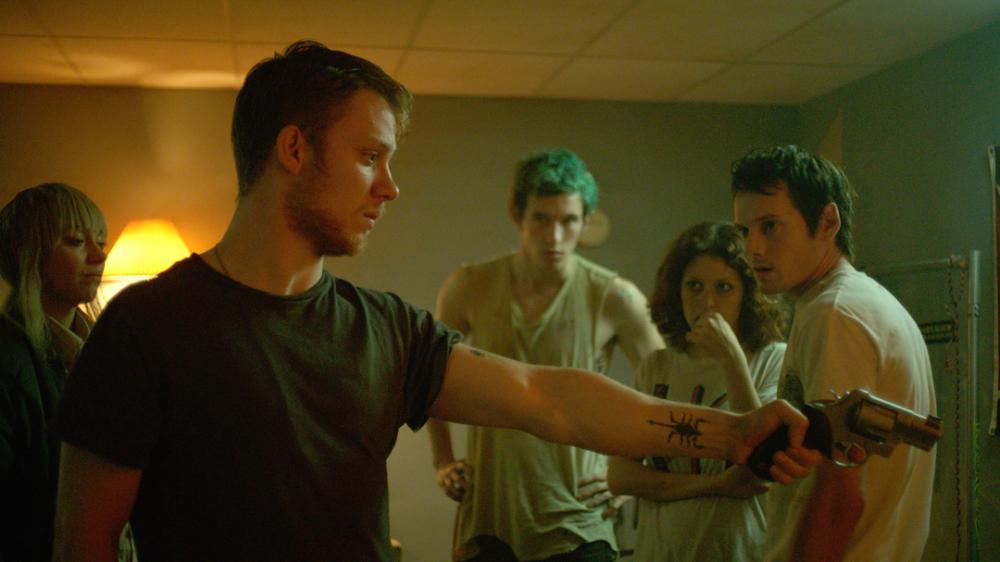
Jeremy Saulnier’s follow-up to his fantastic neo-noir revenge flick “Blue Ruin” has become instantly notorious. A punk band becomes a witness to a murder and the band members find themselves trapped in the green room, trying to survive from the band of murderous neo-Nazi skinheads led by Darcy (Patrick Stewart in a restrained menacing form).
What makes this film so great is the gritty realism, and the realistic acting of people in such a distressing situation. This comes from both sides; the skinheads are never mindless evil goons. Before a bunch of neo-Nazi skinheads drop in on the film’s survivors in the last half-hour of the film, they are nervous and shaking, yet they pretend to have a handle on the situation.
The violence in this film is unrelenting, shocking, but never excessive. The cast performs everything exactly perfect. Anton Yelchin, a fantastic actor taken away too early, plays the band’s bass player, and his fragility and growth as a warrior is the standout in the film. The rest of the band, played by Alia Shawkat, Joe Cole and Callum Turner, are all fantastic, including Imogen Poots, a neo-Nazi skinhead who becomes a co-witness to the murder.
Patrick Stewart proves his versatility, especially in the end with his expression of shock when he realizes he’s lost complete control. A special mention has to be made to Macon Blair who plays Gabe, the club’s bouncer, whom you can see struggling with the immoral practices of the gang he’s affiliated with. Blair was also the star of “Blue Ruin” and delivers another perfect performance.
It shows the immense talent of Jeremy Saulnier, whose every future directorial efforts is something to watch out for.
4. 12 Angry Men (1997)
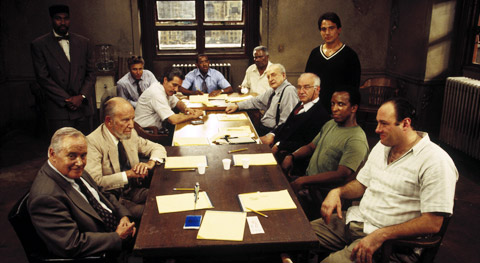
No list concerning movies where people are mostly in one room, is complete with “12 Angry Men”. The story of one juror doubting the surety of his fellow jurors about the guilt of a young man, slowly convincing them through the course of the film, has all the moral quandaries and classic performances that makes for classic drama.
While I’m not negating the immortality of the original, I do want to devote this segment to the 1997 remake, which has been extremely underrated. One of the greatest actors of Hollywood, the late great Jack Lemmon, plays juror #8, who confronts his fellow jurors of their innate biases and even bigotry.
There’s Ossie Davis’ sensitive turn as Juror #2; our favorite former mobster, the late great James Gandolfini as Juror #6, already showing shades of his great capabilities; Armin Mueller-Stahl is perfectly cast as the intellectual juror #4; even Tony Danza gives probably his greatest performance as the egotistical juror #7.
The rest of the incredible cast has Edward James Olmos, the late great Hume Cronyn, William Peterson, Dorian Harewood, Courtney B. Vance as the foreman, and Mykelti Williams playing the deeply racist juror #10. But perhaps the greatest performance comes from George C. Scott, playing the troubled juror #3, the last one that Juror #8 has to convince. I will be controversial and say that Scott’s outburst at the end, his eventual admittance that his judgment has everything to do with his relationship with his estranged son, is even superior to Lee J. Cobb’s incredible performance in the original.
Aside from the acting talents, William Friedkin, director of such classics as “The French Connection” and “The Exorcist” (as well as the underrated “Sorcerer”) sits behind the director’s chair. Seeing as he has made a few blunders in his cinematic repertoire, this might one of his last great films (especially since before this one, he made “Jade”).
It’s sometimes sad to watch this film, especially since these faces are so familiar to me from my youth and many of them are now gone. Regardless, whether you prefer the original, I would advise that if you haven’t seen this film, give it a chance. The worst thing you will see is watching acting legends play off each other.
3. The Hateful Eight
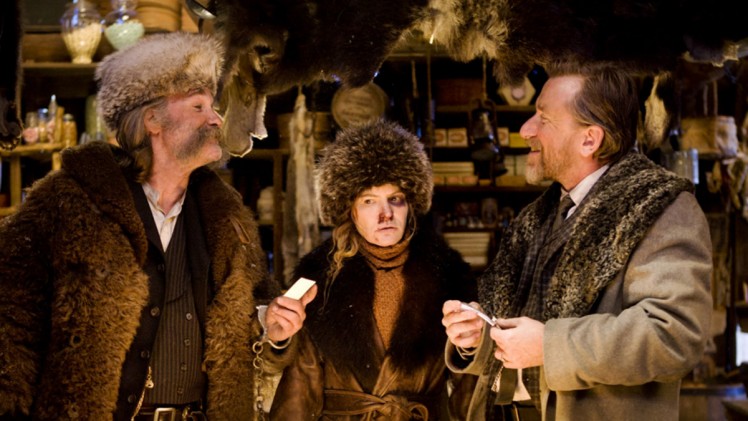
Set a few years after the American Civil War, the coolest guy on Earth – Kurt Russell – plays John Ruth, a John Wayne-sounding bounty hunter who has to get his prisoner, Daisy Domergue (a fantastic Jennifer Jason Leigh), to a place called Red Rock.
Along the way he encounters another bounty hunters named Major Marquis Warren (Samuel L. Jackson), and Chris Mannix (Walton Goggins), who was on his way to Red Rock to be appointed sheriff. The two passengers in Ruth’s stagecoach are two former veterans of the Civil War who both fought on different sides (it’s not hard to guess which person was on which side), which leads to your typical Tarantino-esque verbal diatribes.
During a blizzard the whole gang are forced to seek refuge in Minnie’s Haberdashery, a stagecoach lodge. In this lodge, some suspicious looking characters are housed, such as the hangman Oswaldo Mobray (a deeply entertaining Tim Roth); a writer, Joe Gage (Michael Madsen); a former Confederate general, Sanford Smithers (Bruce Dern); and Bob the Mexican (Demian Bichir), who is supposedly left in charge by the owner. As one could expect, not everyone is exactly the person they say they are, and soon enough, bullets start flying and things get very bloody.
“The Hateful Eight” is possibly one of Tarantino’s greatest films after “Pulp Fiction”. I know a lot of people are fond of “Inglourious Basterds”, but to me, this one reigns supreme. It’s possibly because of the limited setting, as most of the film eventually becomes a sort of stage-play inside Minnie’s Haberdashery with all these great performers, all on their A-game, playing off each other.
The legendary Ennio Morricone composed the score, some of it being leftover from John Carpenter’s “The Thing”, giving it both an ominous and suspenseful atmosphere. The film’s opening theme is one to remember.
It’s hard to pick the standout in this film. Perhaps it’s Leigh, who truly shines in this film as the psychotic Daisy. Maybe it’s Russell’s hilarious turn as the simple-minded bounty hunter. Many would undoubtedly mention Jackson, who has his usual Jackson-like moments that are absolutely hilarious.
But perhaps it’s Goggins, who more than enough times steals the show and it’s Mannix and Warren, two people from different sides of a war and their burgeoning friendship through the course of the film, that is the heart of the film. There’s a surprising amount of heart in this film. The ending, which was changed from the original script, is both heartfelt and even touching, considering all the gory violence that transpired throughout.
In my book, it’s already a classic and will be known as one of Tarantino’s greatest efforts.
2. Sleuth
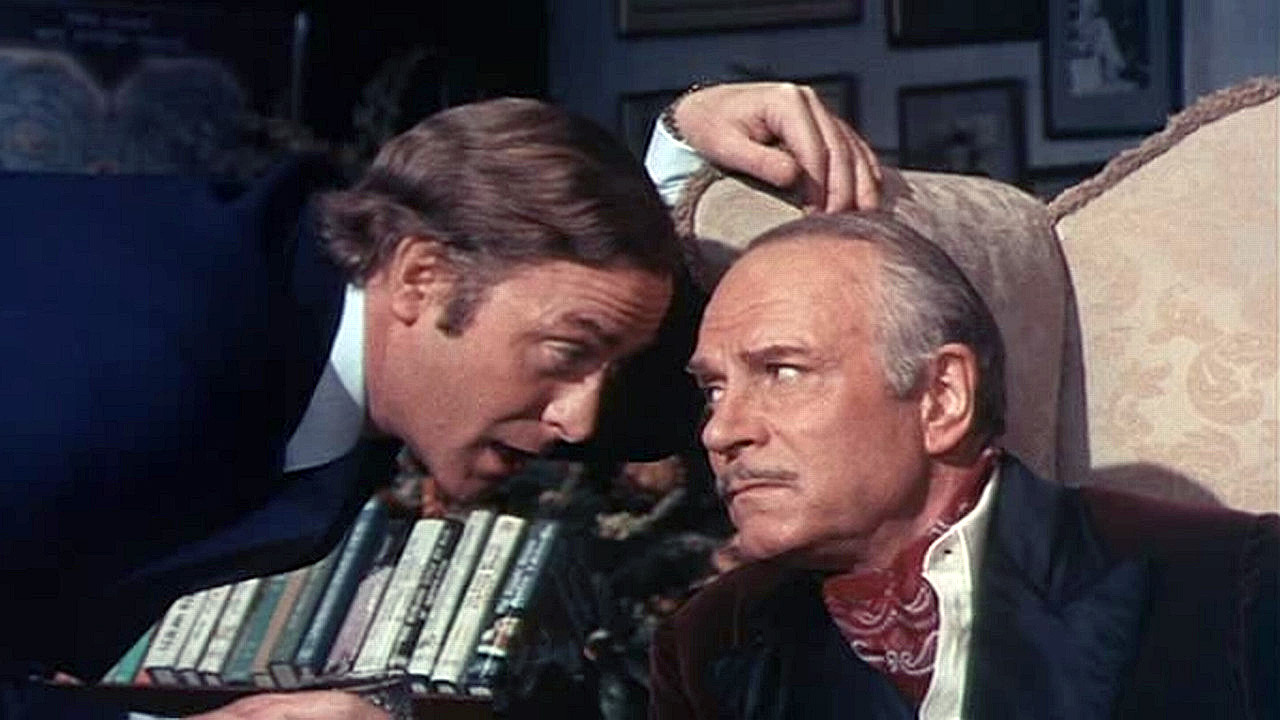
If you are a big fan of Sherlock Holmes and the concept of two intellectuals duking it out with their wits, then you should absolutely check out this film. It takes place in one single mansion where two intelligent men, thanks to their bloated egos, go to extreme lengths to outwit each other.
Laurence Olivier plays Andrew, a successful crime author who invites his wife’s lover, Milo (a young and dashing Michael Caine), into a fiendish game of cat and mouse. Andrew thinks the young Milo is out of his depth, but he will soon discover that Milo is no spring chicken himself.
The film only includes these two stellar characters and the banter between them is delicious to watch. The remake by Kenneth Branagh has Jude Law as Milo and Michael Caine taking the role of Andrew instead (who is now old enough for the part).
It’s a worth a watch, even though it doesn’t match the brilliance of the original, but the banter between Caine and Law is still supremely entertaining, especially in the first half. It’s only the ending which differs greatly from the original, which isn’t as satisfying as the original. Yet, the change is very interesting with a peculiar twist that deserves to be seen and talked about.
1. Rear Window
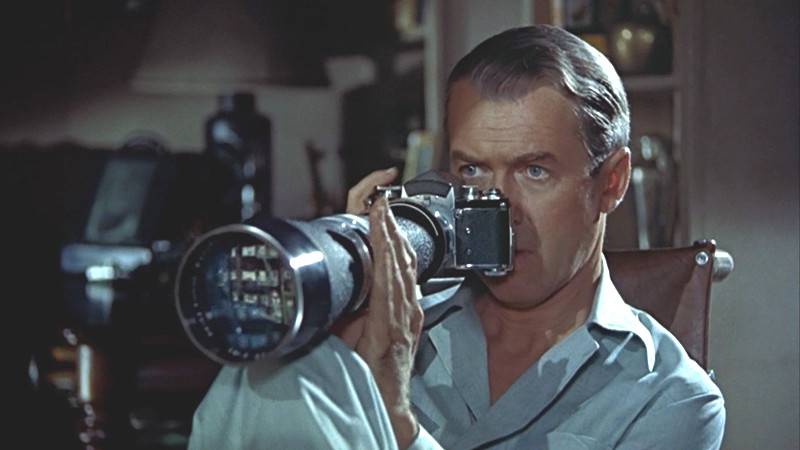
Jefferies (played by one of cinema’s all-time immortals, Jimmy Stewart) is a photographer who must reluctantly rest in his apartment until his broken leg has properly healed. Jefferies is not the kind of character that thrives on staying home, and the enormous heat wave amassing upon the apartment complex is not helping.
In boredom, he begins to watch his fellow tenants, becoming more and more aware of their private lives. He becomes particularly obsessed with Mr. Thorwald (Raymond Burr), who he believes has murdered his wife and a tenant’s dog. With help of his girlfriend Lisa (one of Hitchcock’s immortal blondes, Grace Kelly), he begins his investigation.
There’s no shortage of scholarship concerning Alfred Hitchcock’s genius with the language of cinema. This film is a perfect example of how to tell a story in a limited setting, as most of the film is set in Jefferies’ apartment. Yet there’s a greater genius beyond Hitchcock’s artistry of telling a suspenseful story in a limited setting – it lies in its psychological message.
Predominantly working in an era of conservative restrictions, Hitchcock managed to not only push boundaries but put forth provocative subtexts in films that seem relatively tame. This is why “Rear Window”, with its PG rating, feels sleazy, but in the best way possible. The sleaze has a purpose. The sleaziness is not there to indulge on the viewers’ hunger for seeing scenes of primal content matter, but rather to expose the viewer for wanting to see such scenes.
It’s a film about voyeurism but it gives only a peek of the dark side of our voyeuristic subjects (probably due to the censorship restrictions at the time). But at the same time, it exposes the viewer’s need for wanting to see more, and wanting more proof of our subject’s base nature. We are the film’s main character; we are LB Jefferies, watching our neighbors from the security of our homes.